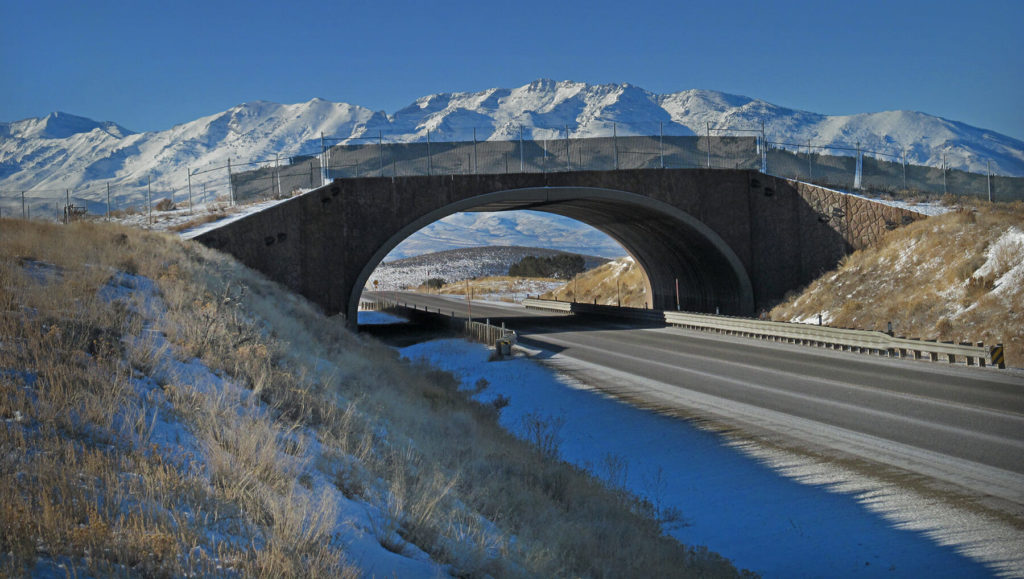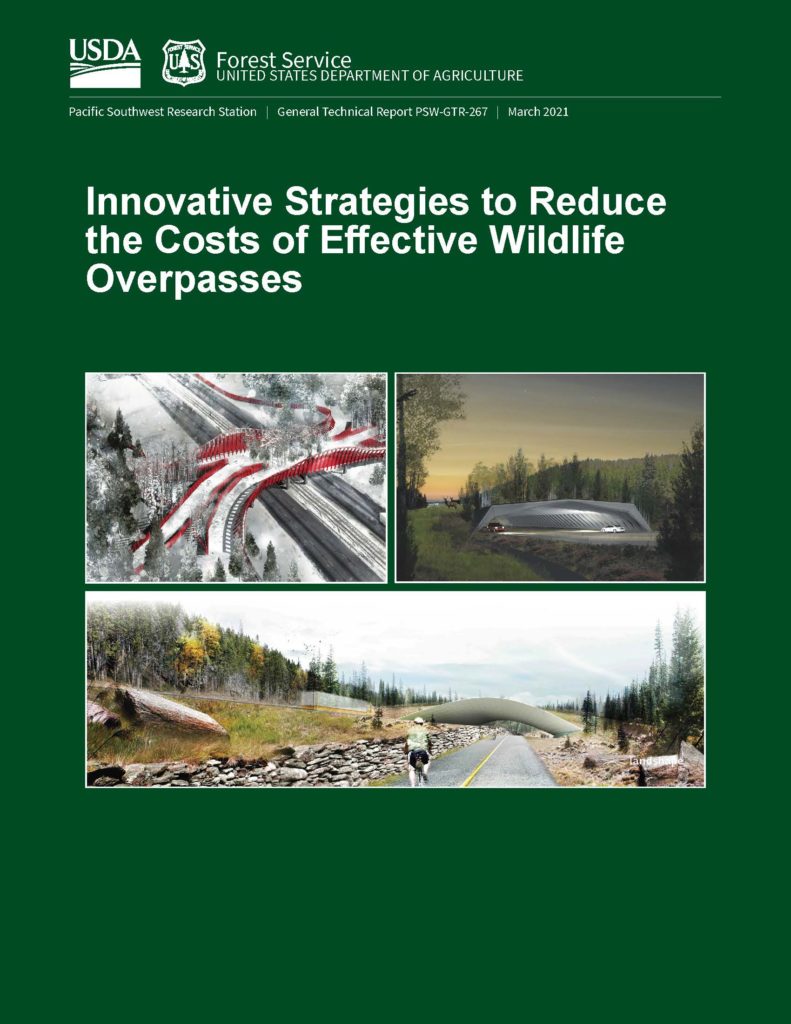Wildlife-vehicle collisions take a toll on our environment and society in many ways. They endanger wildlife populations, cause human injuries and deaths, and cost US taxpayers billions of dollars a year. Well-designed wildlife road-crossing structures are a proven solution but are not without challenges. Two reports recently published by the US Forest Service—with contributions from Center for Large Landscape Conservation staff—address these challenges while providing useful information on costs, benefits, and planning of crossing structures.
Experts from the Center have been working to help develop the body of research on wildlife crossings for many years and have integrated much of that research into these reports. Co-authors of both reports include Rob Ament, senior conservationist at the Center, and former staffer Renee Callahan, now executive director of ARC Solutions—a fiscally sponsored project of the Center. Along with their fellow contributors, they provide new guidance on crossings for policymakers, transportation engineers, and interested conservation practitioners.
Highway Crossing Structures for Wildlife: Opportunities for Improving Driver and Animal Safety
Developed collaboratively by a multidisciplinary team of experts, this report summarizes for policymakers the challenges and anticipated benefits of creating a systematic, national network of wildlife crossings.
The report first explores the high cost of wildlife-vehicle collisions and the many challenges to transforming the US road network. For instance, no single agency is responsible for ensuring that animals can move freely across the landscape to meet their needs, so solutions often need to align the efforts of multiple partners. The report then catalogs the anticipated benefits from investing in highway crossings for wildlife.
In addition, the report identifies existing support for wildlife crossing structures and some policy and funding improvements that would further support the deployment of crossings. Finally, it maps out a path forward that advances evolving technological solutions while building upon successful efforts to reduce wildlife-vehicle collisions already underway at the federal, state, local, and Tribal levels.
Innovative Strategies to Reduce the Cost of Effective Wildlife Overpasses
Wildlife overpasses, or structures that bridge a road or highway to allow wildlife to cross over safely, pay for themselves fairly quickly but are often regarded as expensive to build. This report contains a host of information useful to transportation engineers, compiling design and construction techniques, strategies, and considerations aimed at reducing costs while maintaining or improving the efficacy of wildlife overpasses.
Potential cost-savings considerations are explored for each stage of the building process: planning; design and construction; and procurement, delivery method, and cost accounting considerations. Examples range from recognition that good design requirements can significantly affect project costs, to acknowledgment that restrictions used for vehicular bridges may not apply to wildlife crossing structures, to awareness that the choice of materials can potentially reduce costs.
Learn about our Corridors & Crossings Program





